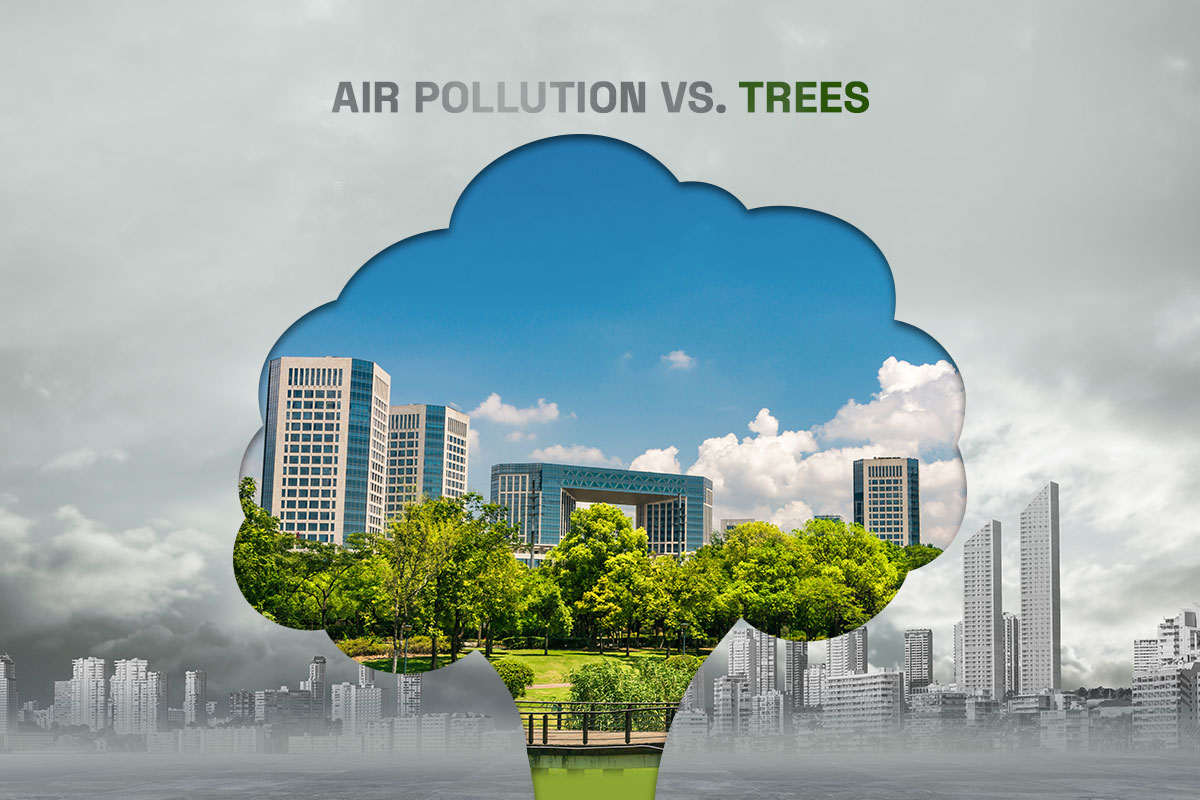Air Pollution vs. Trees

Air pollution occurs when the natural components of the atmosphere are modified due to contamination caused by any chemical, physical, or biological agents. Some of the common sources of air pollution are household combustion devices, motor vehicles, industrial facilities, and forest fires. Pollutants like particulate matter, carbon dioxide, nitrogen, carbon dioxide, and sulphur dioxide cause major public health concerns. A lot of respiratory diseases are caused by indoor and outdoor air pollution. Air pollution is one of the growing causes of morbidity and mortality. According to the World Health Organization (WHO) data, almost all of the global population (99%) breathes air that exceeds the WHO guideline limits for air quality and contains high levels of pollutants. It has been observed that low- and middle-income countries are suffering from the highest exposures to polluted air.
Air quality is directly linked to the climate crisis. Therefore, monitoring the air quality and reducing air pollution would lead to a win-win situation for health and the climate. It would ensure reducing the burden of death attributable to air pollution and also near and long-term negation of climate crisis.
Trees have been acknowledged as the cheapest and most impactful solution that can be used as our first line of defense against the climate crisis. Having said that, tree plantations are also a direct solution to air pollution. Trees have the ability to filter the air by storing carbon dioxide for the photosynthesis process. Therefore, trees can improve the quality of the air we breathe. It has been noted that if approximately 20 million trees are planted, the world will have 260 more tons of oxygen and get rid of 10 million tons of carbon dioxide. This has been considered a mind-blowing figure. Therefore, it has been made evidently clear that reforestation or afforestation will largely help the cities have better air quality. In fact, initiative for urban greening and urban reforestation are been executed keeping in mind the kind of impact trees can have on air pollution. Ideas such as live walls have been incorporated in busy cities filled with air pollution to improve the quality of air.
Trees can improve the air quality in direct and indirect ways. By providing shade to buildings and reducing the temperature, trees ensure that the need for air conditioning will not be felt as strongly. Additionally, lower temperatures reduce the risk of harmful pollutants at ground level, like ozone, that usually spike on hot days in urban areas. Trees are highly effective in removing particulate matter from the atmosphere, which can easily enter the human body and is hugely responsible for respiratory and cardiovascular diseases. Across the globe, 8.9 million deaths a year could be attributable to exposure to outdoor particulate matter. This death toll can be decreased by increasing the afforestation rate.
However, certain trees are more effective at reducing the air pollutants in the atmosphere. Silver birch, yew, and elder trees are the best trees to capture particulates. Evergreen trees like pines or cypresses are also trees that can greatly contribute to purifying the air. The dense canopy and needle-like leaves of conifers are most apt to capture particulate matter. Therefore, evergreen trees can be planted in highly polluted cities to improve the air quality. Certain concerns about planting these trees in favorable conditions arise but can be taken off with strategic planning.
Regardless, planting of trees is one way of improving the already degraded air quality. Conscious efforts have to be made to ensure lower emissions, which would further ensure that the air quality is not compromised beyond a certain level because air pollution affects trees too! Yes, even though trees are deemed an impactful solution to air pollution, what is often overlooked is the fact that air pollution affects trees as well. Today, many urban and rural trees are considerably affected by air pollutants. Even though trees use carbon dioxide for photosynthesis, air pollution affects their respiration, damages their living tissue, and impairs the process of photosynthesis itself. Air pollution also weakens the trees therefore, making them more susceptible to insects and diseases.
Therefore, it becomes a matter of serious importance to control the level of air pollution; otherwise our solution to the pollution might be the one most gravely impacted.

